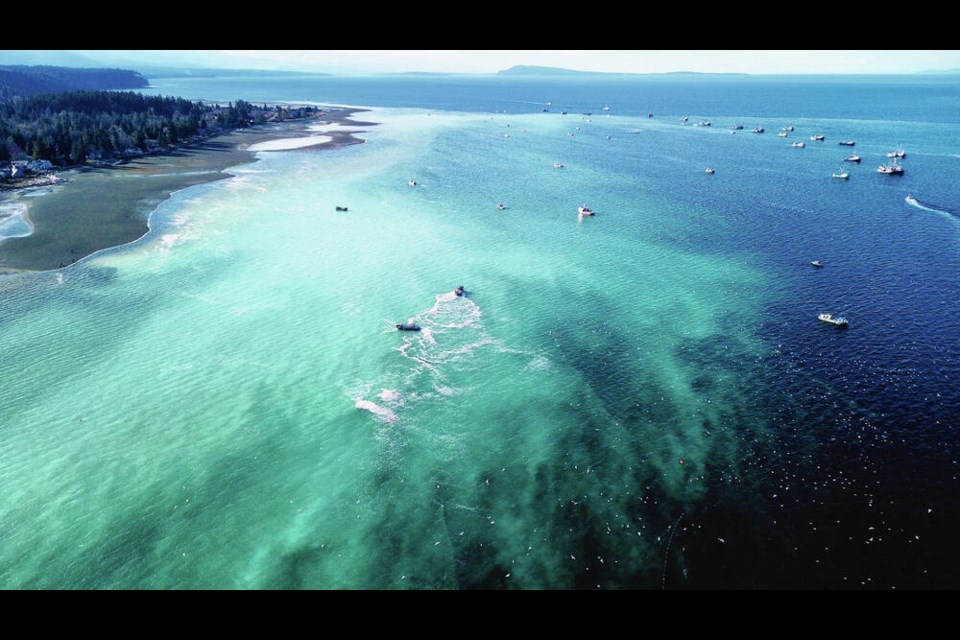The annual herring spawn is wrapping up this year and it appears “pretty encouraging” on the west coast of Vancouver Island and in the Strait of Georgia.
Commercial fishing in the strait closed Friday, Bryan Rusch, regional pelagics co-ordinator for Fisheries and Oceans Canada, said Monday. Seine boats were out on the water first this month, followed by gillnets.
“I think overall it has definitely been a positive year so far,” he said.
The total allowable catch in the Strait of Georgia was slightly higher than last year, he said, adding that the department is taking a conservative approach when setting limits.
This year’s total catch for herring for the entire coast has been set at 9,251 tonnes, up somewhat from the previous year.
Herring do not always spawn in the same location. They can move around the strait. This year, spawning was seen and is continuing at Cortes, Herndado and Savary islands. Spawning has happened there before but not that often, Rusch said.
“But the focus has really been on the area between the outside of Denman and Hornby islands and then the Vancouver Island shore from Deep Bay down to Nanoose has been quite active this year.
Last year, Port McNeill was a surprise spawning area. But there’s been little reported so far this year.
The roe herring fishery accounts for the bulk of the commercial fishery. Japan is the main customer.
Herring is an important part of First Nations culture. First Nations food, social and ceremonial fisheries are open in all areas.
Spawning on Vancouver Island’s west coast turned out to be better than expected, Rusch said. It has been visible in Ucluelet Harbour and between Tofino and Ahousat.
Limited commercial fishing was set for the Prince Rupert District and the Strait of Georgia.
As well, limited commercial harvest of spawn-on-kelp will be allowed in the Central Coast and in some other small areas.
Loic Dallaire, a UVic master’s student, is teaming up with the Pacific Salmon Foundation to do work for the federal Fisheries Department. He is using high-tech tools and drones to develop a effective way of using satellite imagery to better understand herring spawning patterns.
Meanwhile, the Heiltsuk First Nation is suing the federal government because commercial harvest of herring spawn-on-kelp in the nation’s territory was banned in 2022. The nation maintains this was an infringement of its Aboriginal rights.
>>> To comment on this article, write a letter to the editor: [email protected]



